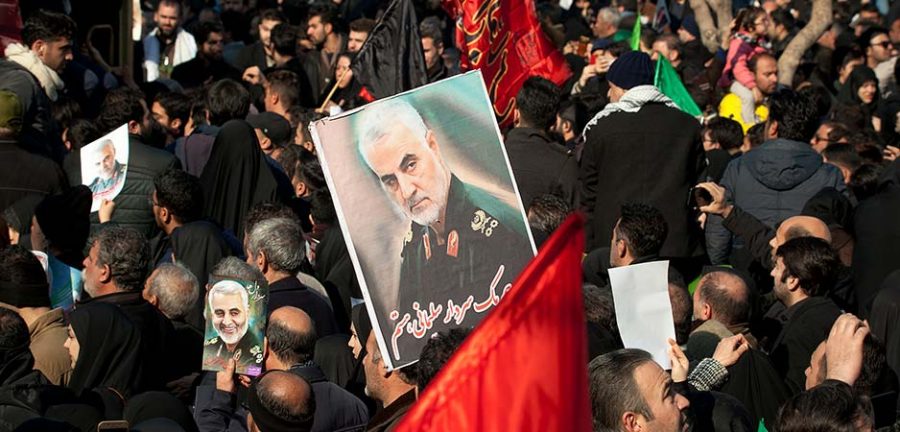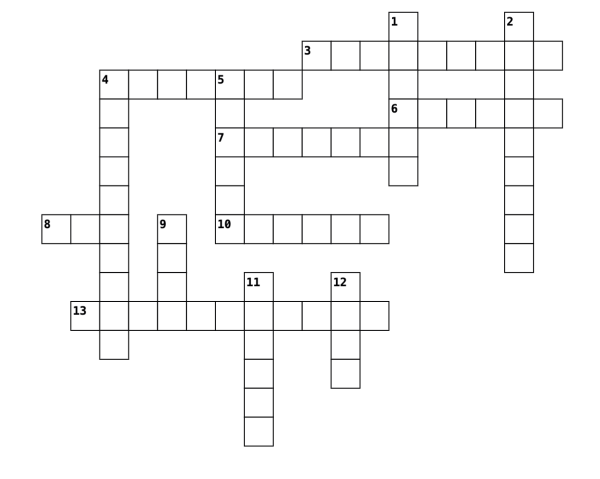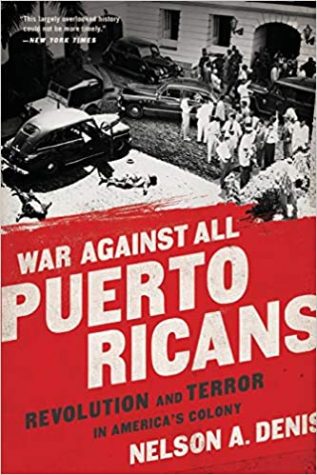SCECE Release IV: A Brief Introduction to Current US-Iran Tensions
On the news, in your instagram feed, and in the hallways, lately, there’s been no escaping talk of the looming “world war three.” But what started it all? What’s actually going on? And who’s saying what about it? SCECE did the research so you don’t have to. Below, we explore the roots of the Soleimani assassination, the role Soleimani played in Iran, the complicated aftermath, and how other countries are tied up in this. If something catches your eye, you can click the hyperlink for a more detailed explanation, and even further reading has been provided below.
What led to Qassem Soleimani’s assassination?
The precursors to Soleimani’s assassination began when a U.S. contractor in Iraq was killed in a missile attack. Though no group has claimed responsibility for the attack, U.S. Secretary of State Mike Pompeo blamed Iranian proxy groups. The missile attack seemed to many to be linked to previous attacks led by Kataib Hezbollah, a Shia Iranian proxy in Iraq.
In response, the U.S. unleashed a series of fatal airstrikes on facilities of Kataib Hezbollah in Iraq and Syria. Many citizens surrounded the U.S. embassy in Baghdad and violently protested the American airstrikes. Soon after, the U.S. assassinated Soleimani and Abu Mahdi al-Muhandis, an Iraqi military commander.
Who was Qassem Soleimani and why did we care about him?
President Trump announced that his decision to assassinate Qassem Soleimani was driven by a fear of future terrorist attacks on the United States. Soleimani was the leader of Iran’s Quds force, an international sector of the Islamic Revolutionary Guard Corps (IRGC).
The IRGC is a military branch of Iran tasked with protecting the ideologies of Iran and has been designated by the U.S. as a foreign terrorist group due to its violent means of carrying out its missions. Many of their goals in foreign countries oppose those of the U.S.. An example is Iran’s support of the Assad regime in Syria through resources, funding, and support of the Lebanese Hezbollah, while the U.S. supports Assad’s opposition.
There has been much dispute about the decision to assassinate Soleimani. Trump claimed that Soleimani had plans to attack American diplomats and service members in the region and considered the assassination a preemptive mode of protection. However, there is debate as to whether these plans actually existed. Because Soleimani was not only the leader of these organizations, but one of the most influential and important people in Iran’s official government, the implications of his assassination are much greater. Soleimani soon became a martyr for many in Iran and Iraq as people flooded the streets to mourn and protest his death.
What is the aftermath of Soleimani’s attack?
Many Americans cautiously waited for five days as Iran calculated a retaliation. On the night of January 8th, Iran launched 22 ballistic missiles at the U.S. embassy in Iraq. There were no American fatalities, although many have later been diagnosed with mild traumatic brain injuries from the attack.
A few hours later, Iran shot down a Ukranian plane, mistaking it for a hostile flight moving towards a critical military site in Iran, which resulted in the deaths of all 176 passengers. Iran initially denied responsibility for the attack, pointing to technical malfunctions as a potential culprit. However, shortly after, they admitted responsibility and apologized. Citizens in Iran convened to mourn the deaths and some broke out in protest over the Iranian government’s initial cover up of the accident.
Fortunately Iran’s retaliation has not yet lead to further violent conflict despite the fact that Soleimani’s assassination could easily become grounds for war.
Additionally, in response to Iran’s latest airstrike of a U.S. military base in Iraq, the U.S. has imposed additional sanctions to construction, mining, manufacturing, and textile industries in Iran. The administration justifies these sanctions on the basis that the IRGC is responsible for most of the growing infrastructure in Iran. These are in addition to the rigorous sanctions already on Iran, many of which were reimposed when the Trump administration exited the 2015 Iran Nuclear Deal (known as the Joint Comprehensive Plan of Action). These sanctions have led to high levels of inflation in Iran and have only angered the leaders and citizens.
Amid and following these events, Iran has issued a statement saying they will continue to breach the restrictions set by the Iran Nuclear Deal. Although the U.S. recently exited the deal, other countries have remained. Since the U.S. exit, Iran has surpassed nuclear limitations because Europe has been unable to compensate for the financial loss due to the U.S.’s sanctions. Iran has repealed governmental limits on their uranium enrichment and centrifuge development, although they state that this is subject to change if countries can improve the current deal.
Iran has recently threatened to back out of the Nuclear Nonproliferation Treaty (NPT) which prevents all participating countries, except those who have already developed a nuclear weapon, from using or developing nuclear technology with the intent of developing weapons. Iran states that its continued agreement of the treaty is contingent that European countries do not bring forth Iranian violations of the Iran Nuclear Deal to the UN, an action which would result in UN sanctions being reimposed on Iran.
While there is concern that Iran’s abilities to develop a nuclear weapon are now unhindered, it seems Iran hopes its developments will bring it leverage in negotiations. Developing a nuclear weapon would not be in the best interest of Iran, but the fear has the potential to make countries provide concessions to stop this development.
How is Iraq involved?
Much of the recent conflict has been taking place in Iraq, not Iran. Iran has significant military influence in Iraq, especially through Shia militias. Iran supported the rise of these groups to protect Iraq and themselves from ISIS. Although these militia groups are now part of Iraq’s state military, Iran still retains significant influence over them. Following Soleimani’s assassination, Iraq has requested that U.S. forces leave the region, which the U.S. has yet to follow.
Useful Sources & Further Reading:
Soleimani and Iran’s International Influence:
https://www.youtube.com/watch?v=qtzvIBAYP_8
Summary of Recent Events:
Protesters at U.S. Embassy in Baghdad: https://thehill.com/policy/international/middle-east-north-africa/476318-protesters-storm-us-embassy-in-baghdad-after
Research Centers and Opinion Pieces:
Left:
Right/ Opinions similar to the Trump Administration:









